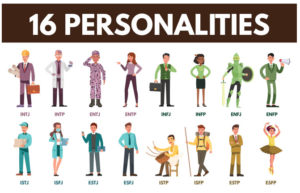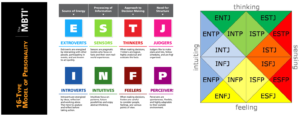Myers & Briggs Type Indicator (MBTI)

Every person is unique.
However, there are an awful lot of unique people on earth, so to speak several billion. The multitude of unique qualities of all these people, in a positive and negative sense, is therefore difficult to grasp. That is why for years and days psychology has been looking for what people have in common. The search for these common features has been very intense. Carl Gustav Jung, a Swiss psychiatrist and follower of Freud, is considered the founder of typology. Mother Katharine Briggs and daughter Isabel Myers Briggs have further developed his theories in the last century and subsequently converted them into one of the most well-known type questionnaires, namely the Myers-Briggs Type Indicator®.

MBTI identifies sixteen psychological types. With that, the nature-nurture debate is over that psychology had been in its grip for so long and entered a new era. Every person is unique, sure, but nature gives groups of people the immutable temperament to which they correspond and nurture (education) reinforces the innate individual differences that make each person even more unique.
Today, this method is used by millions of people worldwide. From 1992, the Action Type pioneers Bertrand Théraulaz, and Ralph Hippolyte. embroidered. They discovered the association with the motor styles of athletes. In 2005, sports psychologist Jan Huijbers applies his psychology of attention and concentration to Action Type.
